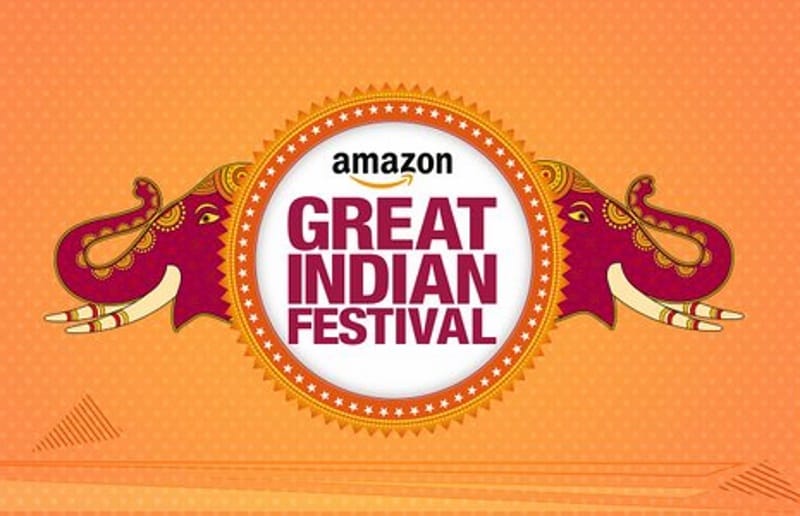- Home
- Internet
- Internet Features
- Amazon Bets Billions on Taking Title as India's Top Web Retailer
Amazon Bets Billions on Taking Title as India's Top Web Retailer

When Jeff Bezos donned a bandhgala jacket two years ago and posed for photographs in India, he wasn't just promoting Amazon.com Inc.'s year-old business in the country. The web retailer's chief executive officer was also putting his reputation on the line to break into the emerging e-commerce market.
Now, with 80 million products for sale, 120,000-plus merchants and more than two dozen warehouses, Bezos's protégé Amit Agarwal is aiming to make Amazon the country's top online store by sales ahead of the Diwali shopping season. Known as the "festival of lights," the run-up to the celebration is India's biggest retail event, when consumers buy everything from clothes and electronics to jewelry and cars. Indians will spend as much as $1.7 billion (roughly Rs. 11,307 crores) online during Diwali this year, according to RedSeer Consulting.
(Also see: Amazon Great Indian Sale Offers Deals on Redmi Note 3, Moto G4 Plus, Le Max 2, and More)
Flipkart Ltd., India's top web retailer, and local rival Snapdeal, are well aware that they're facing a critical test this year amid Amazon's onslaught. All three are flooding newspapers, billboards and TV shows with ads and are offering discounts for Diwali, which now makes up a third of annual e-commerce sales. At stake is the future of India's online shopping market, as well as Amazon's global expansion plans, which had faltered after it failed to conquer China.
(Also see: Flipkart Big Billion Day 2016, Amazon Great Indian Sale, Snapdeal Unbox Sale Offers to Go Head to Head)
"This season could decide who'll be the ultimate winner," said Haresh Chawla, a Mumbai-based partner at private equity firm India Value Fund Advisors and an angel investor. "The loser will get unnerved and the victor can build internal confidence and rally the troops for the bigger game."
Reaching consumers in India has never been easy-just ask Unilever NV or Procter & Gamble Co., which spent decades making inroads into the market. There are 22 official languages, and consumption habits differ from place to place. On top of that, there are supply chain inefficiencies, high real estate costs, lack of skilled workers, along with poor infrastructure and labyrinthine regulations.
Even so, the prospect of becoming the main web store in a country of 1.25 billion people who are just learning how to shop online is tantalizing. RedSeer Consultancy Pvt. estimates that annual online sales will be $80 billion to $100 billion (roughly Rs. 5,32,145 crores to Rs. 6,65,181 crores) by 2020 from the current estimate of about $13 billion.
"Barely 2 percent of the population shops online," said Mrigank Gutgutia, who covers consumer internet trends at the Bangalore-based researcher. "It is still only the tip of the India e-commerce iceberg."
Merrill Lynch estimates that Amazon may sell as much as $81 billion in merchandise by 2025, up from $3.7 billion last year. Becoming India's top web retailer would be a vindication for Amazon. In China, the only other market with more than a billion people, the company has little to show after a dozen years, thanks to the dominance of Alibaba Group Holding Ltd. and other local web retailers.
"The biggest opportunity and the biggest challenges are both in India," said Agarwal, chief of Amazon India. "It's going to be a great Diwali."
After graduating from Stanford University, the 42-year-old spent part of his career at Amazon's Seattle headquarters as Bezos's technical shadow, a coveted position at the company that grooms future leaders by giving them a front-row view of how the business is run.
To expand inventory, Amazon has been recruiting sellers at breakneck speed. The web retailer has deployed an army of white-and-orange Chai Carts with emissaries who teach sellers how to list inventory and handle returns over cups of milky chai tea. Another service, called Feet-on-Street, sends people on motorbikes to help merchants photograph and market their wares.
Another big task will be moving beyond India's eight big urban areas and into smaller towns and cities. "There could be a protest on the streets, potholes on the road, labor challenges, warehouses in different regions with varied rules, goods trucks passing through state checkpoints-and after all this, the package still has to arrive at the customers' doorstep overnight if not within hours," Agarwal said.
One key goal for Amazon-its tagline for Diwali is tyohar bade dilwala (the festival with a big heart)-is to lure dormant shoppers and first-time buyers. There are important trends working in Amazon's favor. Exploding smartphone use offers the promise of bringing online commerce to hundreds of millions of buyers and sellers.
All of these efforts in India cost money; in June, Amazon said it will invest an additional $3 billion in India on top of an already allocated $2 billion. "An open funding tap could help Amazon offer discounts and bleed out some of its rivals," said RedSeer's Gutgutia.
For Flipkart and Snapdeal, the upcoming Diwali season will determine their ability to stay in the game. For smaller e-commerce startups, survival is at stake. Many, like AskmeBazaar-which advertised aggressively during Diwali last year-shut down before they could make it to this one.
Flipkart, the current market leader with more than 100 million registered users, is getting ready. Amazon's top rival in India is in advanced discussions with Wal-Mart Stores Inc. to sell a minority stake to the US retailer for as much as $1 billion. The Indian web retailer is adding 10,000 temp workers to handle last-mile logistics, and is offering financing plans to put expensive purchases within customers' reach. Flipkart's tagline this year is ab itne me itnaaa milega: now you'll get so much for so little.
Delhi-based Snapdeal, whose backers include Alibaba and Softbank Group Corp., re-branded itself ahead of the shopping season, with a red box logo (its pitch: unbox zindagi, or unbox life).
Consumers like Nivedita Raju, are already noticing the difference. The Bangalore-based government official, who buys DVDs, herbs and knickknacks online, said that when she was looking for a computer title that was out-of-stock on Amazon, the web retailer had it printed and dispatched within 10 days.
"It's a very different level of customer service than Indians have been used to," she said.
© 2016 Bloomberg L.P.
Catch the latest from the Consumer Electronics Show on Gadgets 360, at our CES 2026 hub.
Related Stories
- Samsung Galaxy Unpacked 2025
- ChatGPT
- Redmi Note 14 Pro+
- iPhone 16
- Apple Vision Pro
- Oneplus 12
- OnePlus Nord CE 3 Lite 5G
- iPhone 13
- Xiaomi 14 Pro
- Oppo Find N3
- Tecno Spark Go (2023)
- Realme V30
- Best Phones Under 25000
- Samsung Galaxy S24 Series
- Cryptocurrency
- iQoo 12
- Samsung Galaxy S24 Ultra
- Giottus
- Samsung Galaxy Z Flip 5
- Apple 'Scary Fast'
- Housefull 5
- GoPro Hero 12 Black Review
- Invincible Season 2
- JioGlass
- HD Ready TV
- Laptop Under 50000
- Smartwatch Under 10000
- Latest Mobile Phones
- Compare Phones
- OPPO A6 Pro 5G
- OPPO A6s
- OPPO Reno 15 Pro Max
- Honor Win RT
- Honor Win
- Xiaomi 17 Ultra Leica Edition
- Xiaomi 17 Ultra
- Huawei Nova 15
- Asus ProArt P16
- MacBook Pro 14-inch (M5, 2025)
- OPPO Pad Air 5
- Huawei MatePad 11.5 (2026)
- Xiaomi Watch 5
- Huawei Watch 10th Anniversary Edition
- Acerpure Nitro Z Series 100-inch QLED TV
- Samsung 43 Inch LED Ultra HD (4K) Smart TV (UA43UE81AFULXL)
- Asus ROG Ally
- Nintendo Switch Lite
- Haier 1.6 Ton 5 Star Inverter Split AC (HSU19G-MZAID5BN-INV)
- Haier 1.6 Ton 5 Star Inverter Split AC (HSU19G-MZAIM5BN-INV)

















